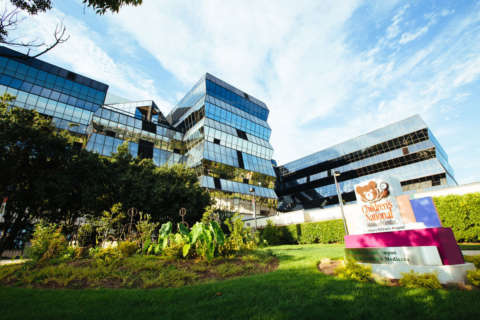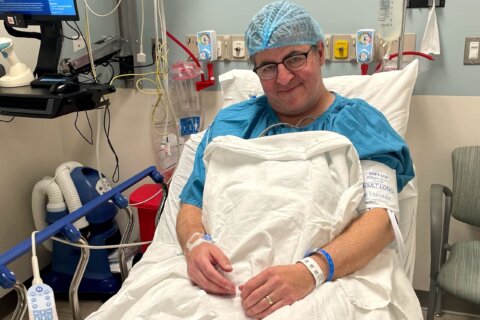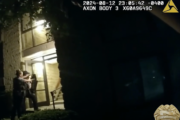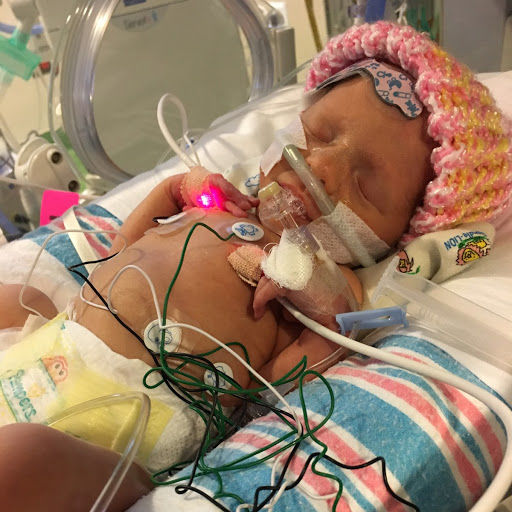
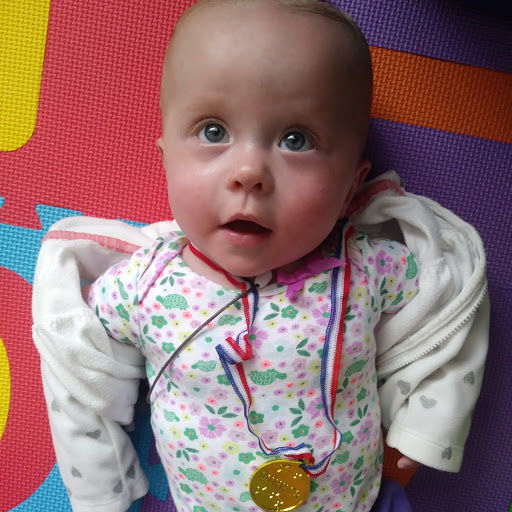
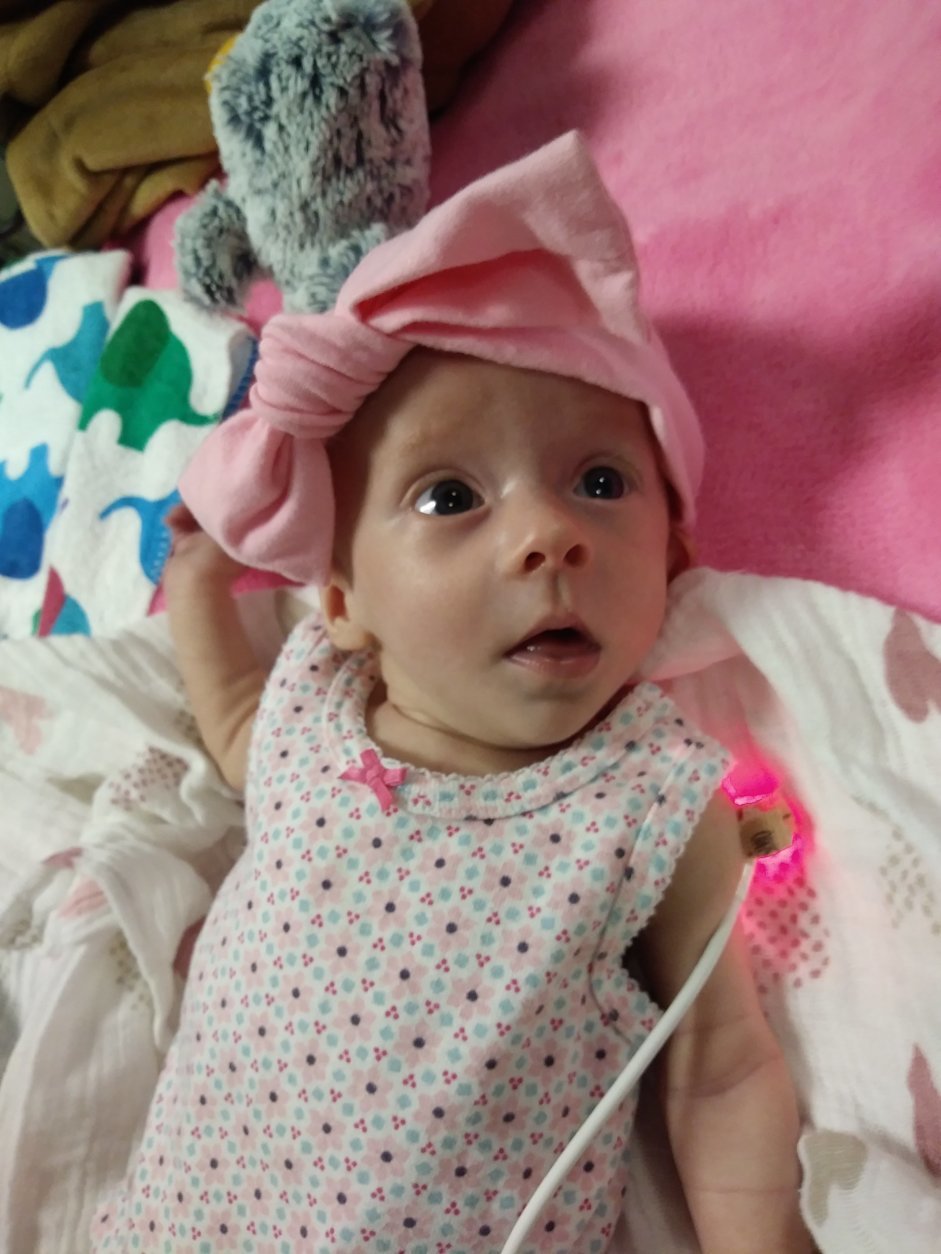

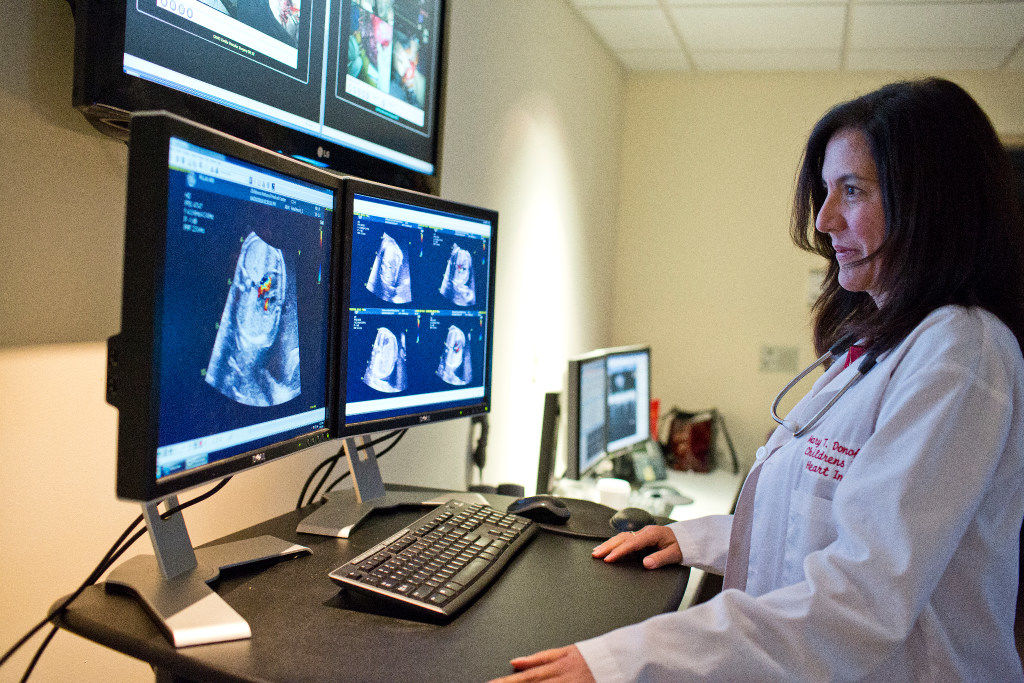
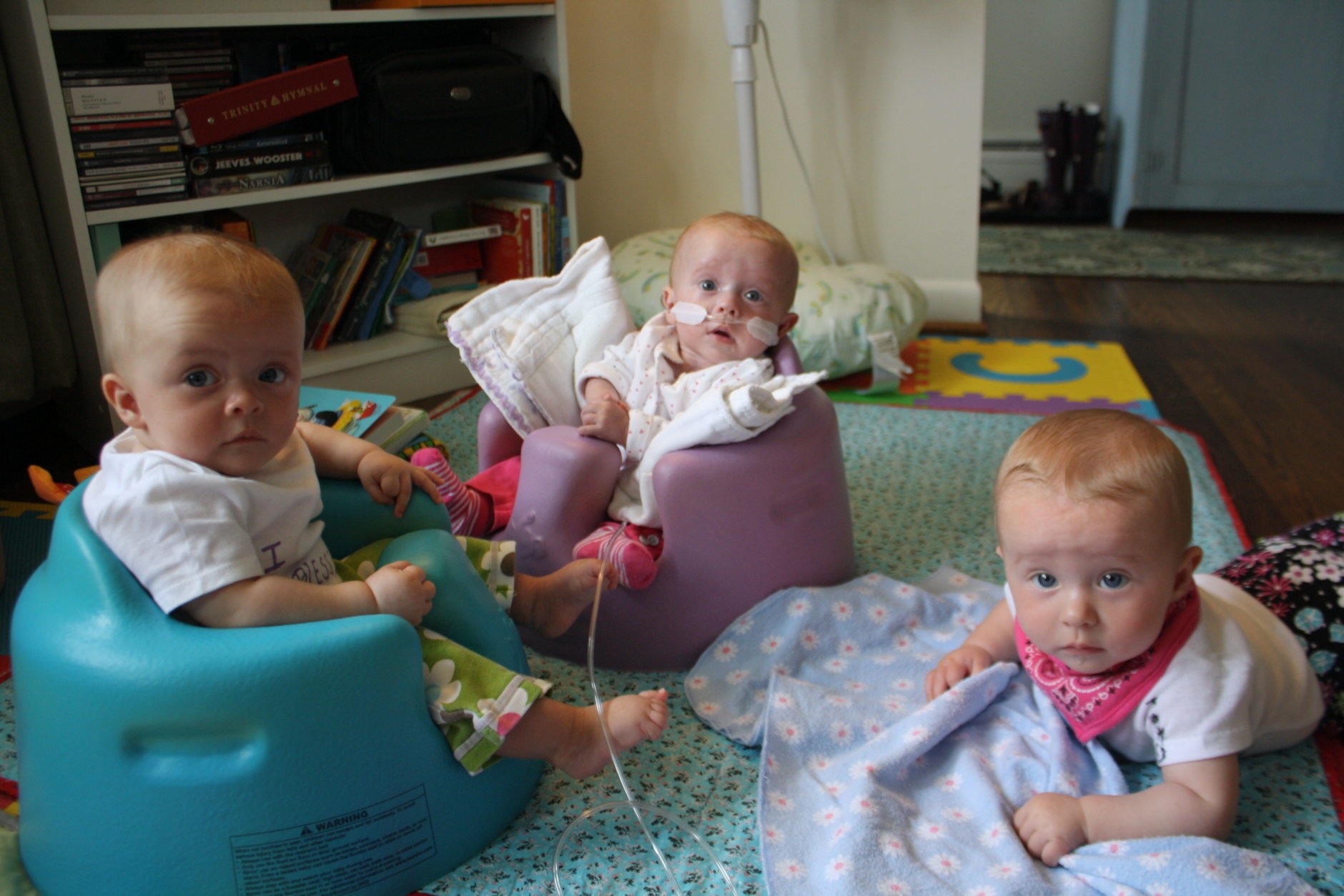
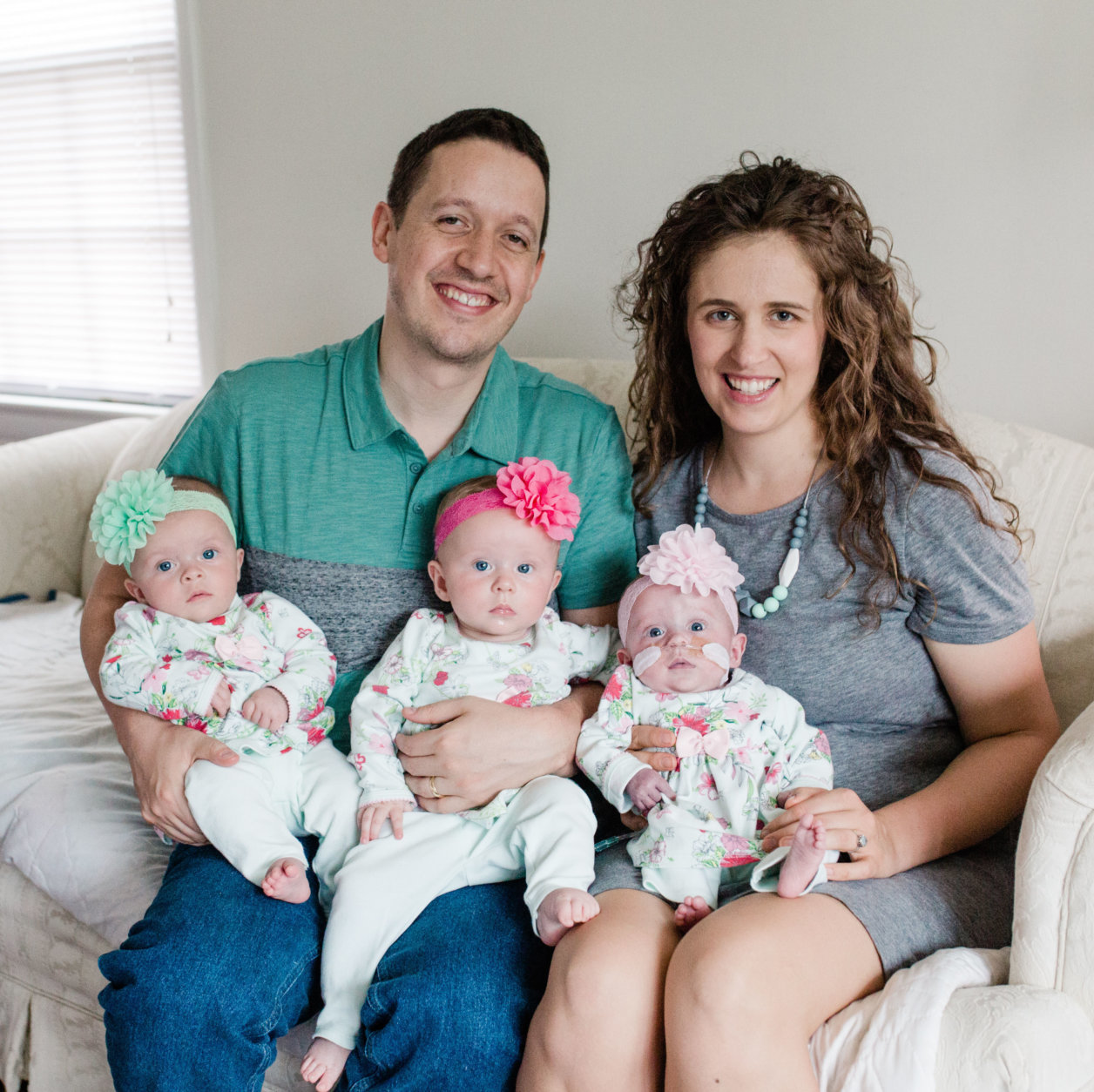
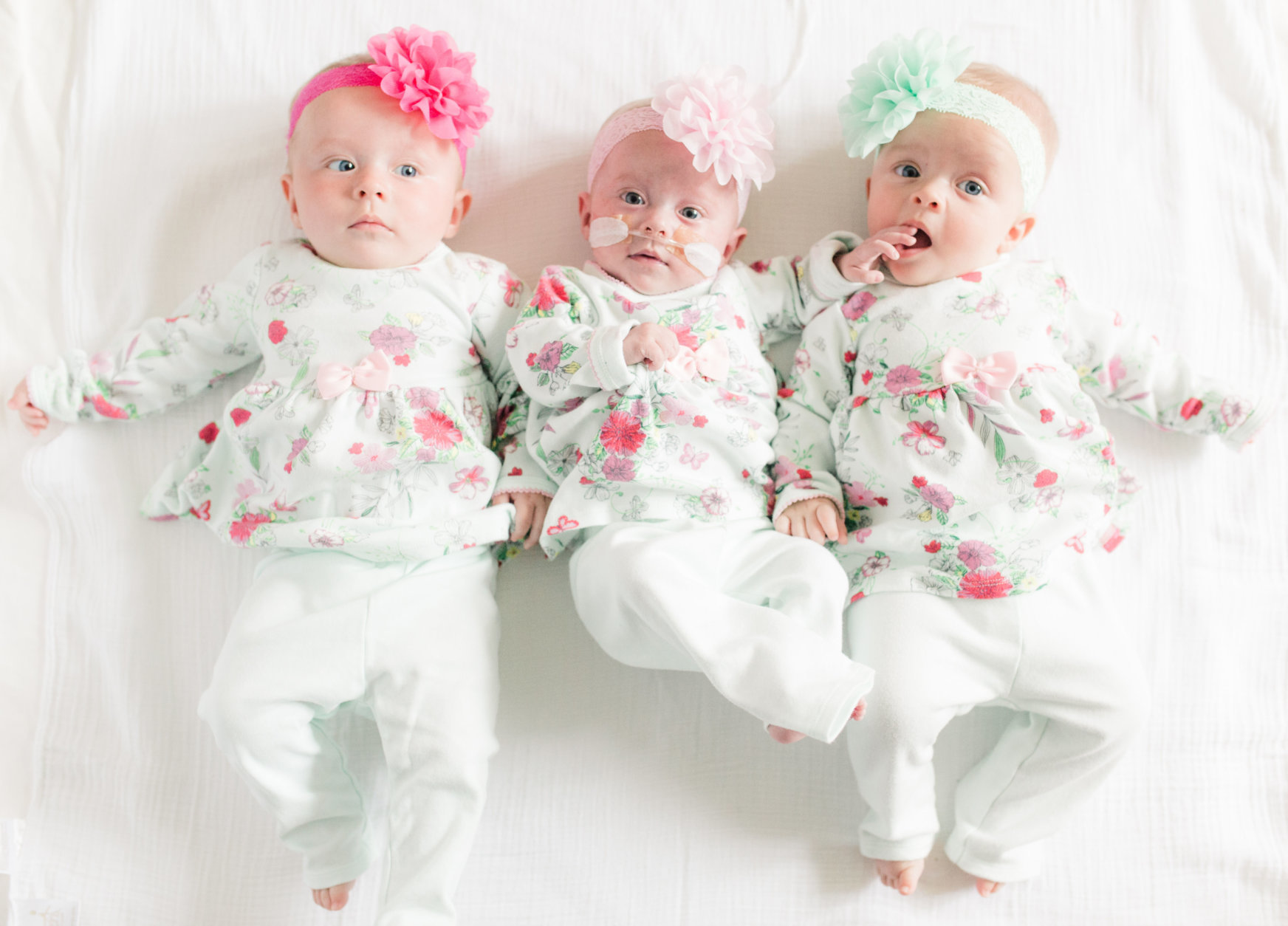
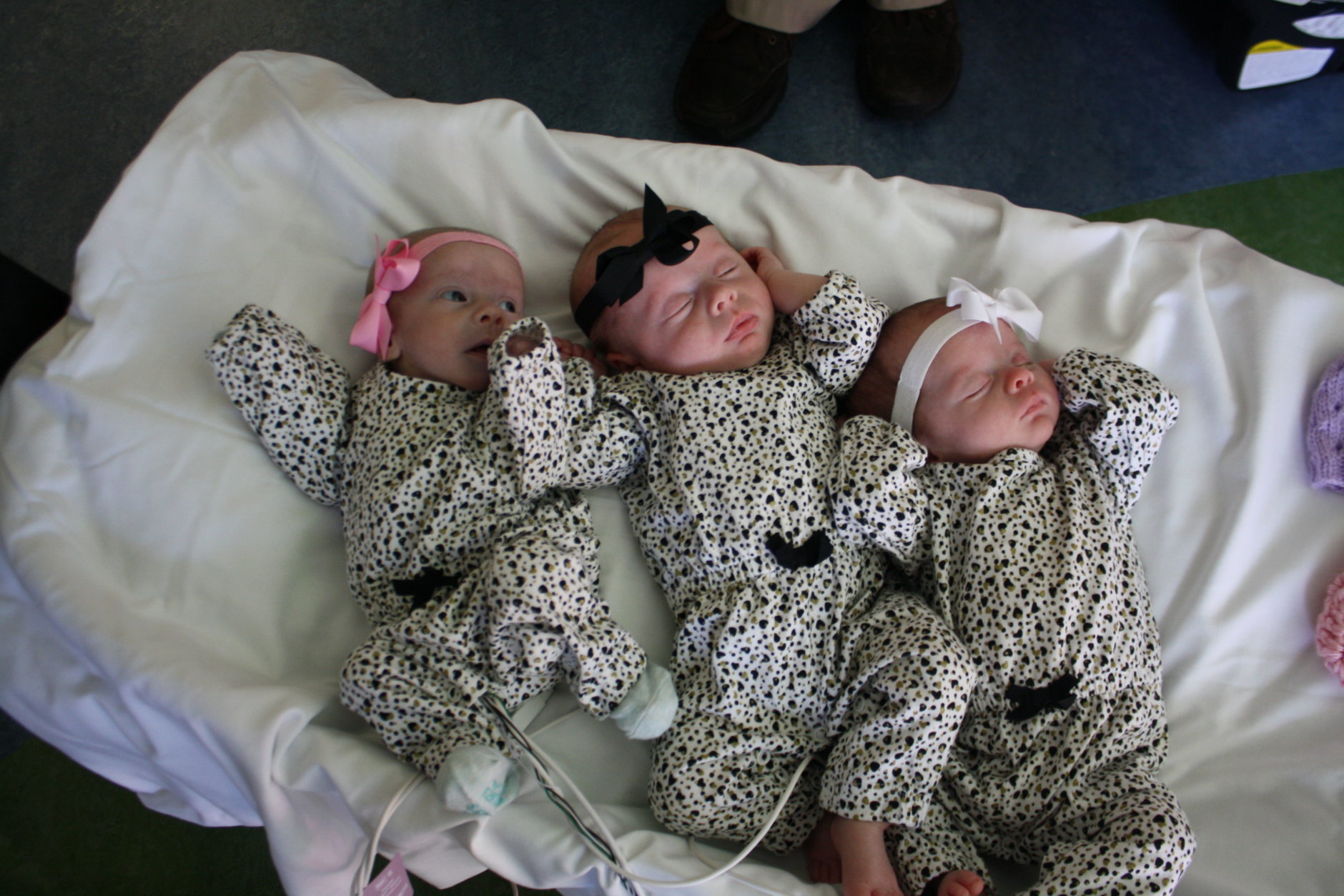
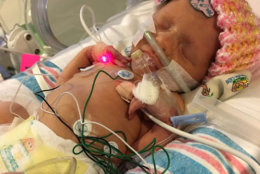
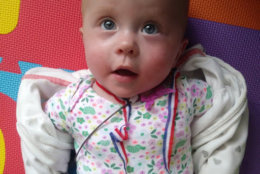
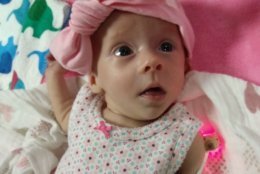

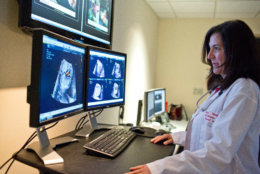
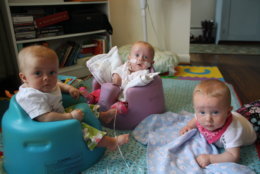
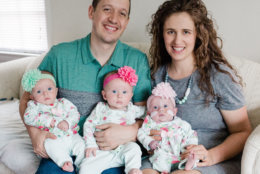
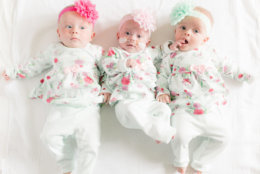
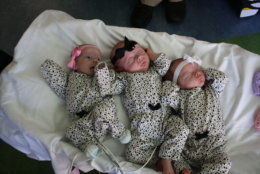
WASHINGTON — Born premature, underweight and with only half a heart, Julia Rueger had a 50-50 chance of surviving long enough to have corrective surgeries. And that was her doctor being optimistic.
On Dec. 2, 2017, Julia was born at Walter Reed Military Medical Center in Bethesda, Maryland, with a congenital heart defect, hypoplastic left heart syndrome, which means the left side of her heart didn’t develop.
“So, now, to be Julia’s cardiologist so many months later and see her thriving is really pretty amazing,” said Dr. Mary Donofrio, director of the Fetal Heart Program at Children’s National Medical Center. “It really has been an amazing journey.”
Before turning 6-months-old, the Berwyn Heights, Maryland, girl had three open-heart surgeries and five cardiac catheterizations.
“When we tell people what happened, it sounds like we’re making it up,” said Paul Rueger, an engineer in the Navy. “Being constantly concerned about a kid, who you haven’t gotten to know yet, dying — it’s a lot.”
Julia was one of the smallest babies in the world to undergo a hybrid heart surgery to begin accommodating her condition. The first procedure happened when Julia was less than a week old, when her heart was about the size of a grape. She weighed less than 4 pounds.
Although the surgery is still relatively new in the U.S., Julia’s cardiac surgeon at Children’s National, Dr. Can Yerebakan, has published papers about it and has done numbers of the surgeries in Germany before coming to the states.
“I’m a nurse, and I remember thinking, ‘I don’t want to try something new,'” said mom Abigail Rueger, who is a pediatric ICU nurse. “But, it went very well.”
Julia is also a triplet, and her sisters, Rose and Elise, have no health problems.
But now, Julia is up to speed with what other 9-month-old babies would do. “She is babbling, rolling, starting to eat stuff, exploring her world. She was on her feet,” Abigail said.
With immediate medical concerns on hold, the family is beginning to transition into more typical challenges faced by the parents of triplets.
The babies are sleeping through the night now — most nights. “Occasionally, someone wakes up,” Paul said. Rose and Elise got into that pattern earlier than Julia, who has endured more hospital time.
“In hospitals, they wake you up every couple hours to take your blood pressure or give you medicine or something. I’m sure it’s good for you, but it doesn’t help you learn to sleep through the night,” Paul said, laughing.
He and Abigail admit that the logistical challenge of being two parents with three kids is easier with the assistance of grandparents. “We get a lot of help from them,” Paul said. “If all three kids decide to be unhappy at the same time, then somebody is not going to be soothed as soon as they like.”
Julia will need an additional surgery to redirect her heart’s blood. Her final procedure is planned for a year and a half from now.
Both parents said they’re grateful for “the incredible care” Julia has gotten at Children’s National. Yerebakan checked in on Julia nearly every day for four months; Donofrio visited Julia and her family last week.
“She now has grown to look just like her sisters,” Donofrio said. “Now that is a success story!”
Abigail and Paul credit God and their faith for giving them the strength to get through the rough times. “I think the big story here is of hope, that there’s hope for healing … and turning to God in your sorrow or in your grief. Pray, and he’s there to hear,” Abigail said.
Children’s National has been named by U.S. News and World Report the No. 1 neonatal intensive care unit in the country.


